Vancouver Tourism Information

With its scenic views, mild climate, and friendly people, Vancouver is known around the world as both a popular tourist attraction and one of the best places for quality of life. Vancouver is the largest city of the state of British Columbia, but not the capital (Victoria). Its the port of entry to thousands of visitors from Asia, the Pacific or Australia into Canada as it has a very developed route network. Therefore Vancouver is also one of the most ethnically and linguistically diverse cities in Canada with 52 percent of the population speaking a first language other than English. Vancouver will attract you for its scenery and beauty, mountain terrain, pleasant life style and friendly locals who are always on hand to answer questions or help you find your way. The city is full of adventure, suitable for families, couples or solo travellers.
There is always plenty to see and do but when you are in need of a rest, walking next to the city admiring the great mountain views or the vancouver harbour in front of you, is a great end to a busy day.
Vancouver has a moderate, oceanic climate. Protected by the mountains and warmed by the Pacific ocean currents, Vancouver is one of the warmest cities in Canada in Winter.
Although Vancouver has a reputation for rain, it actually ranks as the 9th rainiest location in Canada. Vancouver's wettest months are November and December with an average precipitation of 182mm. July and August are the best months to come to visit Vancouver with mild-warm temperatures, more sun-light and a better atmosphere to enjoy outside with around 20-25C. In the Winter it foes not get below 0C in the city, but it can go freezing if you go further north and the mountains. Average temperatures in Winter are around 3-8C, with little or no snowfalls. Springs are rather wet and cloudy, whilst Autumns are nice for the colours but with mild temperatures of around 10-15C.

Reaching Vancouver from other cities in Canada is easy thanks to an extensive transport network of flights, trains and busses. If you are making a trip solely in Canada and fly from one side of the country to the other, (Toronto to Vancouver), flights will take 5.5 hours! The country is actually 8,891 kilometres in length, meaning that taking a flight is the easiest option when travelling to Canada and its cities for a short time. Reaching Vancouver from abroad is easy thanks to direct flights from the USA, Europe and Asia. Airlines as Air Canada and Westjet are the best ones to fly into the country, as they offer the best connections and times. But you can choose a range of other airlines, mainly from the USA or Europe offering at least one flight a day to major cities like London, Paris, Frankfurt, Amsterdam, Tokyo, Hong Kong, Manila, Taipei, Beijing, New York, Chicago, Los Angeles, San Francisco, Seattle amongst many more...
When arriving to Vancouver Airport, there is a train linking to the city centre. It's called the Canada Line, which departs frequently to the heart of the city and takes just under 30 minutes. You need to pay $5 additional fare on top of the regular fare for the airport transit. ($5.70 + $5 YVR Airport Addfare) Its conveniently located between the international and domestic terminal building. There are NO direct busses from the airport to the downtown, but you have a direct bus to the town of Whistler, (famous for skiing) if you are visiting there directly. Book in advance your trip here.
If arriving by train, there are multiple cities (both domestic and international) which connect to Vancouver. The main station is called Pacific Central Station and it is 30 min walk to the city or you can take Skytrain at Main Street-Science World Station.To book and enquire train prices you can check Rail Canada.
Once in the city, Vancouver has 3 transit lines, named instead of metro, Skytrain. Fares start at $3 single, depending on the number of zones you travel. There is also a transit ferry, Seabus, to travel to north to Lonsdale Quay. If you are using public transport often, then consider in buying the Compasscard, this electronic card enables you to travel on all forms of transport and load money on to it. It costs $6 which is refundable when you return the card. As well, it helps to save money as the single fares are $2.40 and for 90 minutes you can ride as many times as you want. Additionally for frequent travellers, consider in getting the daily pass for $10.50 valid for all zones and all modes of transport.
Below you will find the maps for the transportation in Vancouver available to download:
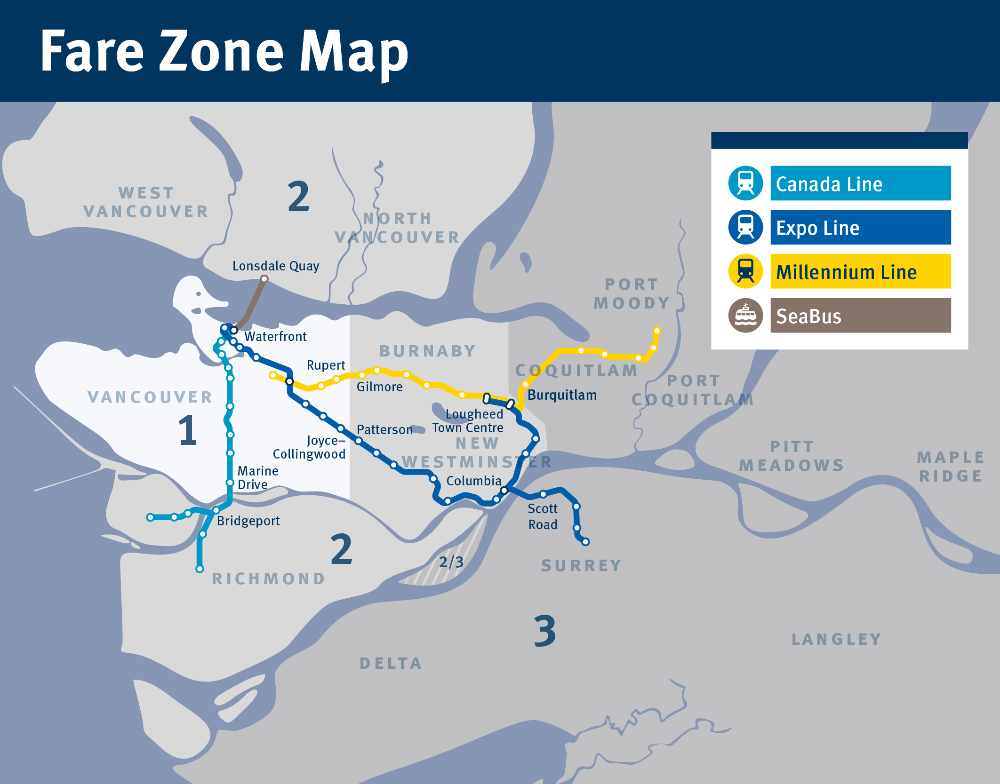


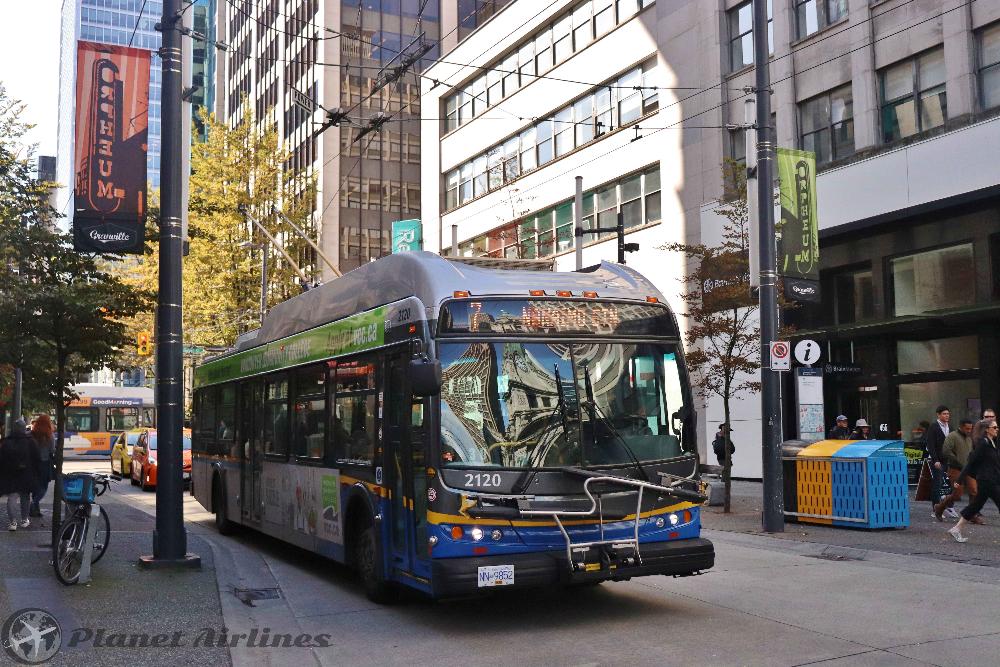
With its mountain backdrop and urban beaches, Vancouver has the rightly earned reputation of being one of the most beautiful cities in the world. Downtown Vancouver is superbly situated on a peninsula in the Strait of Georgia, bounded to the south by the delta of the Fraser River and to the north by a deep fiord reaching far inland (Burrard Inlet). Also to the north, you will find the often snow-covered ranges of the Coast Mountains. With its extensive parks and relatively equable climate keeping temperatures mild throughout the year, Vancouver is a paradise for leisure activities. But it also boasts a busy cultural life, and the modern Downtown is easily explored on foot.
Surrounded by mountains and sea, no visit to Vancouver is complete without taking a moment to admire the scenery. Whether it’s a hike up Grouse Mountain or a relaxed stroll on cherry tree-lined streets, the city has loads to offer. Fuel up with a proper brunch or a hearty meal and then get ready to walk, hike and discover all that vancouver has to offer.
Below are some of the highlights:
- Stanley Park is a peninsula park of huge trees adjacent to Downtown Vancouver. A paved seawall path surrounds the green space. Most visitors take the time to explore on foot or by bicycle. Inland, the park offers many things to do, and visitors can spend a full day exploring attractions ranging from the totem poles at Brockton Point to the west coast sea life at the Vancouver Aquarium. Spectacular views are available all over the park.You can walk to the park easily from downtown, taking around 20 minutes to reach it.
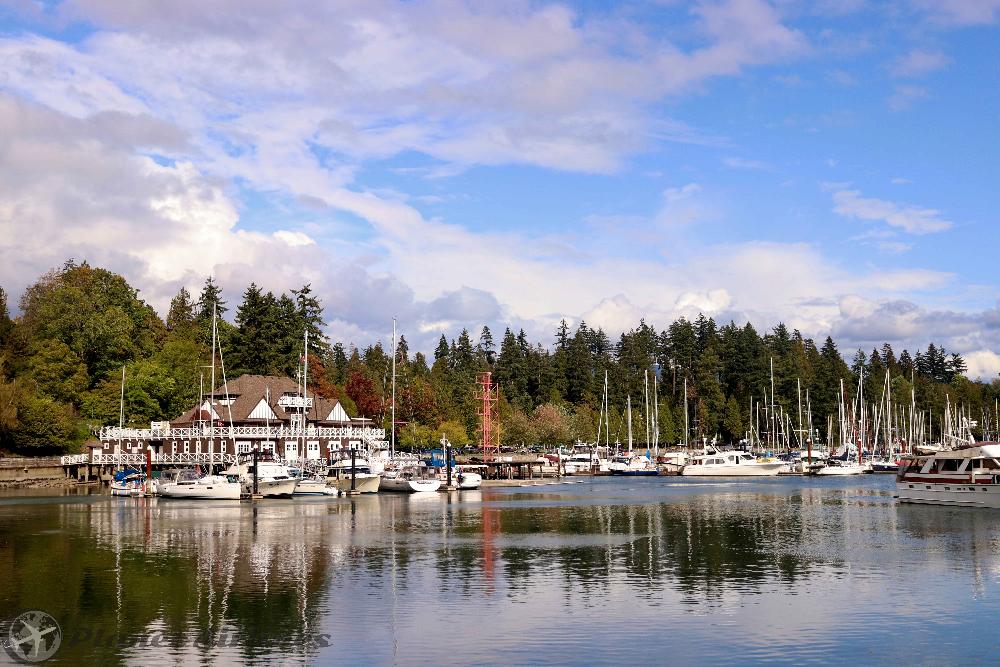
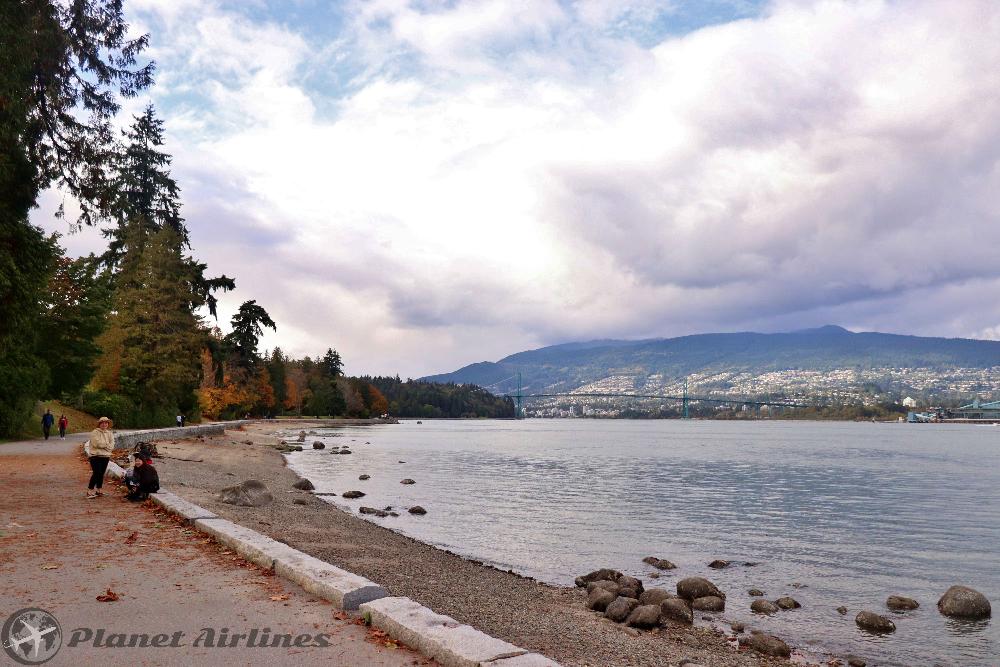

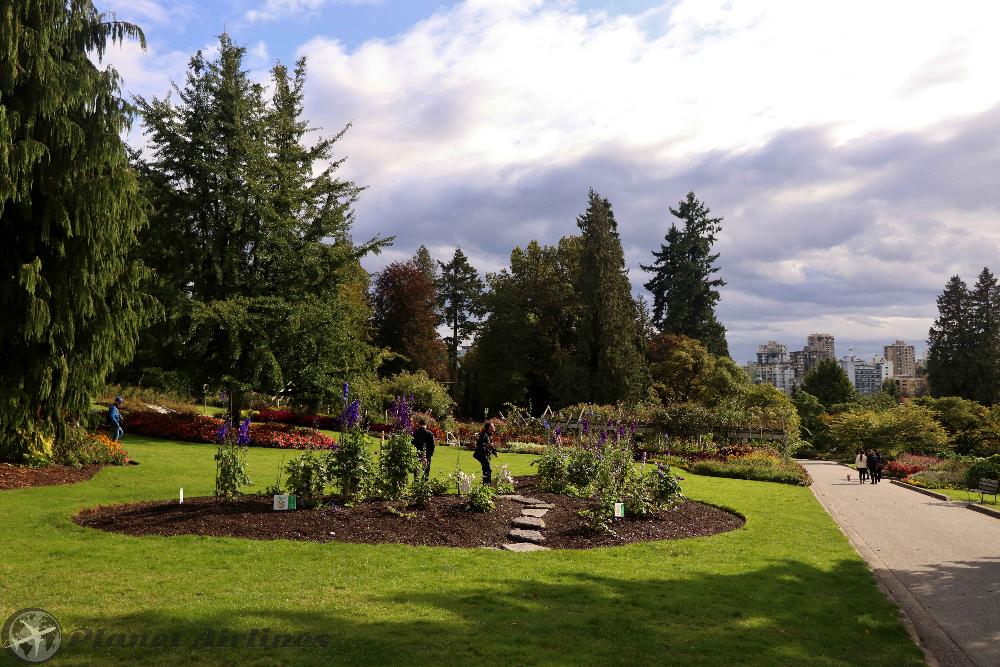
- Grouse Mountain offers both in both winter and summer, an unmatched panorama in clear weather. That's especially so in the evenings when the city lights are on. A gondola operates daily running from street level to the summit, where dining, activities, and wildlife await mountaintop explorers year-round. Especially for families, Grouse Mountain is a winter wonderland offering outdoor skating, skiing and snowboarding. In summer, Grouse Mountain is a hiker's paradise with trails, including the famed Grouse Grind - affectionately called Mother Nature's Stairmaster. Tickets cost $59-80 for the general admission, depending on how many activities you include.
✔️Tip: Buy your tickets online: When purchasing online at Grousemountain,you can get free transportation from Canada Place. The shuttle seating is on a first come, first served basis. Purchase of a Mountain Admission Ticket is required. Trip takes approximately 30 minutes each way. Alternative transportation is available via public transit. Ride the Seabus from Waterfront Station, located adjacent to Canada Place, to the Lonsdale Quay and connect with Bus 236 directly to Grouse Mountain. (Note that the Free shuttle bus only operates during the Summer months).
- Gastown, is the oldest part of the city, it is an area of restaurants, galleries, and shops set in carefully restored Victorian buildings. Heritage structures, cobblestone streets, and iron lampposts give the district its distinctive atmosphere. Gastown came into existence in 1867 when a man called John Deighton arrived on the scene. Deighton had a habit of launching into lengthy stories and soon acquired the nickname "Gassy Jack." As a result, the vicinity became known as "Gassy's Town" or "Gastown". A statue of the proprietor now watches over the neighborhood in Maple Tree Square. Tourists stop for photos with Gassy Jack, and also love to visit the nearby Steam Clock, which puffs steam-powered chimes every 15 minutes. To get there it's a short walk from Waterfront station.
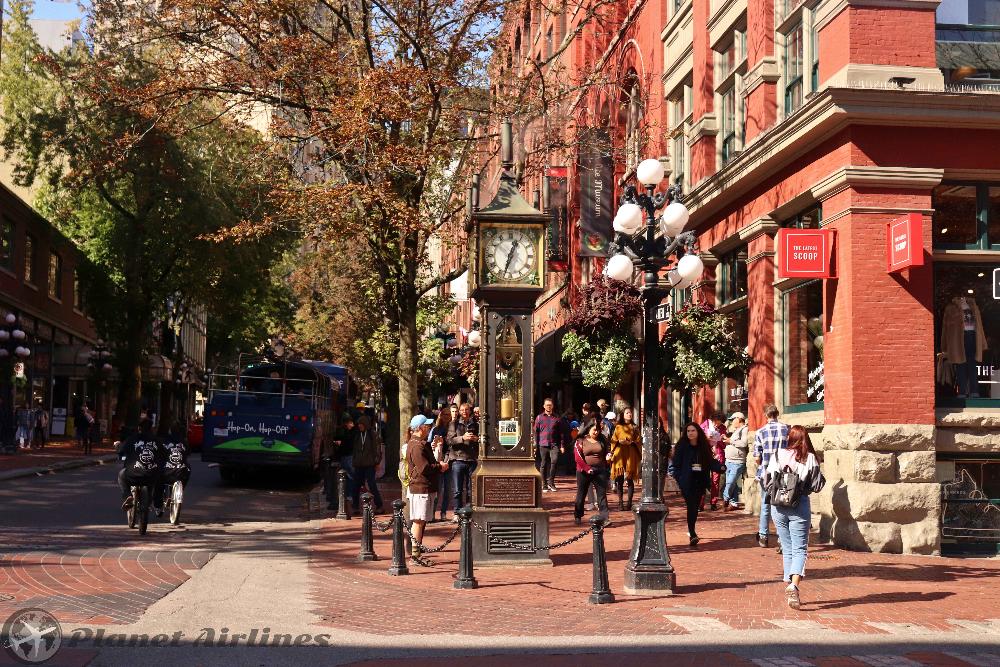


- Canada Place, you can say that for many Vancouver visitors, Canada Place is where a trip begins. The unusual roof creates the impression of a huge sailing vessel. The architecturally remarkable structure is part cruise ship terminal, part convention center and hotel, and part hub for sightseeing bus tours. At the end of the pier, there are panoramic views and the Flyover Canada attraction. You will find information stands, tours and shuttle busses for the major attractions departing from here. Also nearby Waterfront Station, is the major transit hub for the Seabus ferries departing for the public market at Lonsdale Quay in North Vancouver.

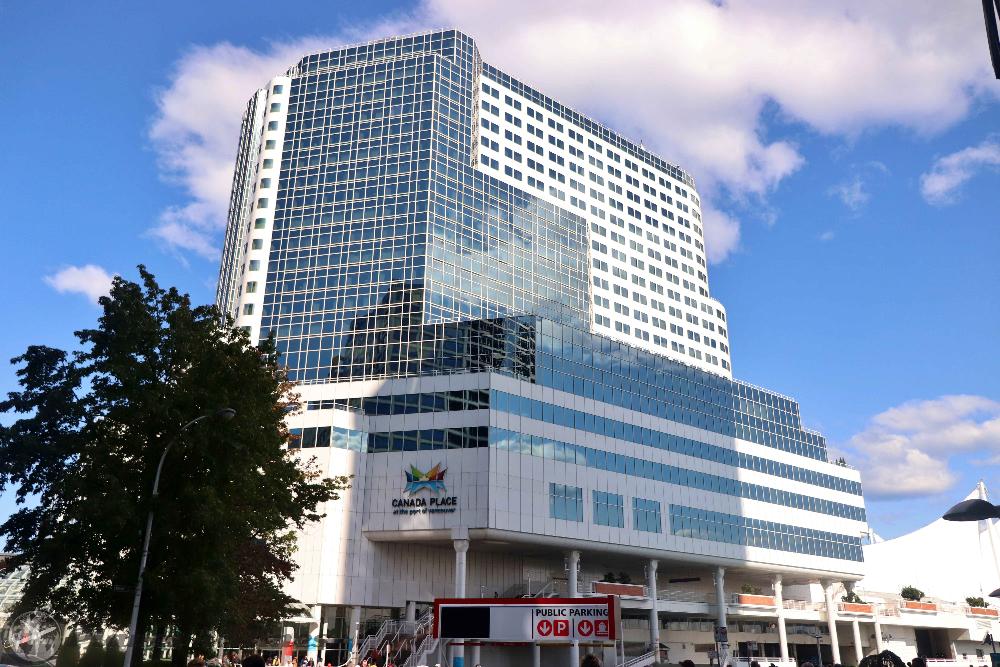

- Kitsilano Beach, the sandy shoreline defines the laid-back, fun-loving Vancouver lifestyle. It's a place locals hang out with friends or take a dip in the outdoor heated seawater swimming pool, and visitors come to admire the mountain backdrop. Views from Kitsilano over the city center are wonderful. In addition to the beach and oceanfront, the area has a number of cafés and walking trails, and a vibrant shopping strip lies a few blocks south on West Fourth Avenue. To get there take bus 2,4 or 7 from the downtown.



- English Bay, this oceanfront beach is located on one of the city's loveliest and busiest areas. Part of the West End neighborhood, English Bay offers shopping and high-end restaurants, but is also a popular outdoor area where people come to walk, bike, rollerblade, or hang out with the public art installations. The biggest event comes in summer when thousands crowd the shores to watch three nights of fireworks set to music. Another popular event is the New Year's Day Polar Bear Swim, when hardy swimmers take a dip in the chilly Pacific waters. To get there take bus 5 from the downtown.
🌈Near by you will find Davie street, its along commercial street full of shops, cafes, restaurants, bars and is home to the LGBT community of Vancouver. Take a stroll around it and discover the colourful neighbourhood open to everyone! You will recognise it by all the flags around the street and stickers on the shop windows.
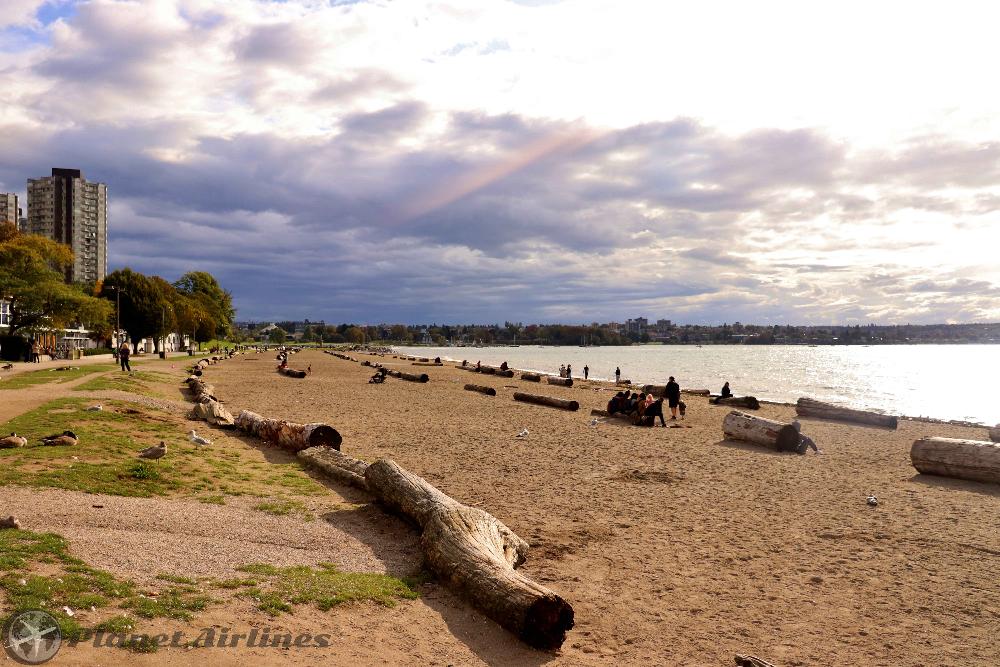
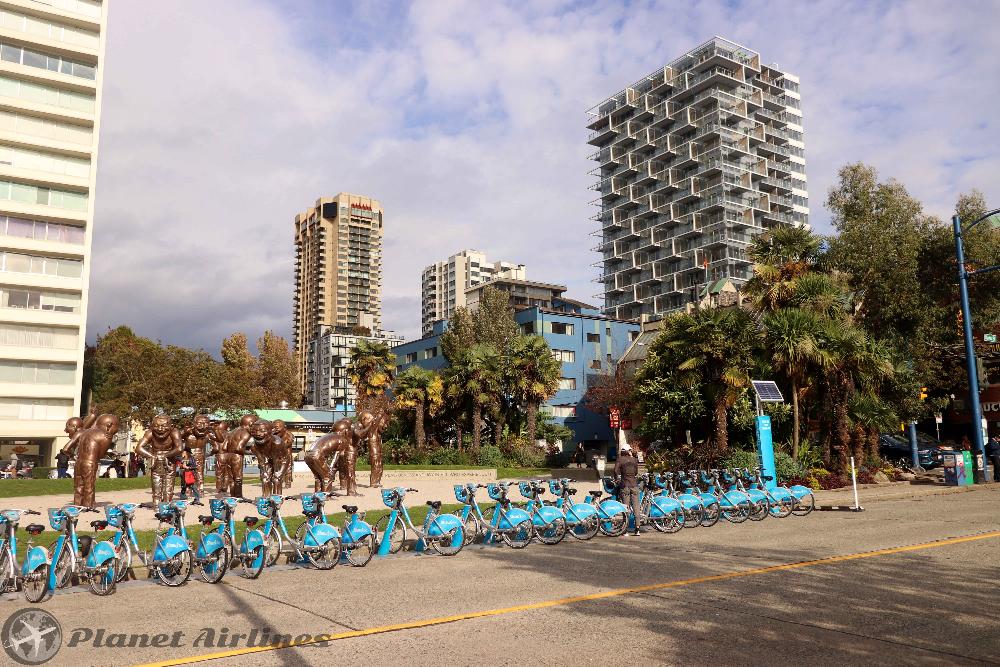
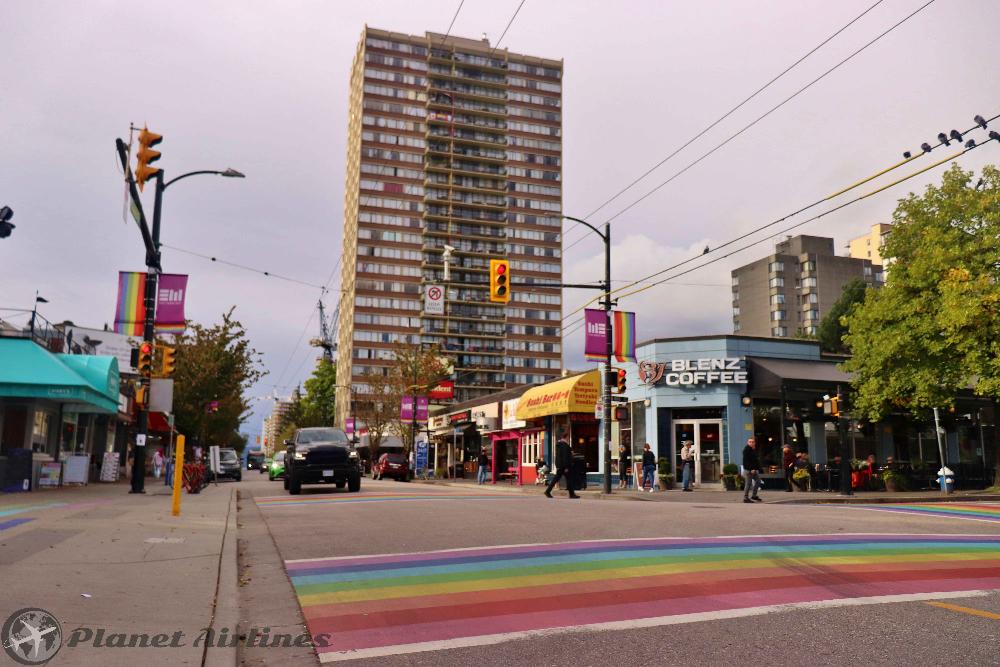
- Capilano Suspension Bridge, its Vancouver's first tourist attraction opened in 1889 and has been thrilling visitors with its swaying bridge over a plummeting canyon. The footbridge spans a 70-meter deep river canyon leading to an activity park filled with forest trails and a treetop walk through old-growth giants. There's also a collection of totem poles and a transparent suspended platform known as the Cliff-Walk. Also along Capilano Road, Capilano Salmon Hatchery is worth a visit (in fall especially) to spot flashing salmon as they try to swim upstream. The fish ladder, a series of staggered pools, allows fish to bypass Cleveland Dam. Underwater windows give visitors a look at their efforts.
✔️Tip: Buy tickets online: If you are staying in Vancouver, the Capilano Suspension Bridge Admission, which costs $54 includes a free shuttle to the site. The shuttle runs from downtown Vancouver. Alternative transportation is available via public transit. Ride the Seabus from Waterfront Station, located adjacent to Canada Place, to the Lonsdale Quay and connect with Bus 236 to the Suspension Bridge which stops outside.

- Vancouver Lookout Tower, located in the heart of the city, this tower is a must see attraction for those who are keen to view the city from a bird's perspective, available day and evening time for the city's night lights scene. The Panoramic 360° views of Vancouver gives visitors a unique sight of all the city. The ride to the top is only 40 second in a glass lift! The tower observation deck is located at 168.80m above Vancouver. Tickets cost $17 and are best bought online at Vancouver Lookout. Closest skytrain station: Waterfront.
- Granville Island, once mainly industrial, is now a thriving center of activity with a relaxed and distinctive atmosphere. Artists and retailers have moved into converted warehouses alongside houseboats, theaters, galleries, and restaurants. The Granville Island Public Market is one of the most popular attractions selling fruit and vegetables, seafood, and a great variety of other specialties as well as ready-to-eat items. Not truly an island, the arts hub is linked to residential areas by one road and footbridges to the south, and to the Downtown peninsula (across False Creek) by ferry. Location: South of the Granville Street Bridge. You can get there by public transport. First take the Skytrain to Olympic Village and then bus 50 which leaves you very close to the island.




- Chinatown you will see the entrance to Chinatown beyond the ornate Millennium Gate. Vancouver's exotic and interesting Chinatown features modern buildings amid many older ones dating from Victorian times. Signs at shops and restaurants are often written in Chinese characters, particularly along East Pender, Keefer, and Main streets - the main shopping areas. Local attractions include the pretty walled Dr. Sun Yat-Sen Classical Chinese Garden, modeled after a traditional garden from the Ming Dynasty. Also worth seeing is the Sam Kee Building, which at barely two meters wide claims to be the narrowest office building in the world. Every year, Chinese New Year is celebrated with an excellent parade. Closest skytrain is Stadium-Chinatown.



- Lonsdale Quay: Situated in North Vancouver, Lonsdale Quay offers spectacular views of downtown Vancouver, its harbour, and the North Shore Mountains. There are also a variety of shops, restaurants, and an excellent public market. The market, though slightly smaller than that of Granville Island, boasts fresh goods, from seafood to fresh fruit and vegetables, pastries and sweets, and there is a wide range of restaurants available, including Mexican, Greek, Japanese, Indian, and more. To get there, the best way to experience the quay is to catch the SeaBus from Waterfront Station, a fifteen-minute ride that allows one to relax and enjoy the view, watch seaplanes land and see cruise ships in the harbour.



- The Museum of Anthropology: It's part of the University of British Columbia, that deals with cultures from around the world, but places particular emphasis on British Columbia First Nations. Exhibits display native art, including large totem poles in the Great Hall. Other presentations explore ethnographic and archaeological objects representing Asia, the South Pacific, the Americas, Africa, and Europe. The interesting building was originally part of a WWII-era fort, and local architect Arthur Erickson transformed the spaces into this world-class museum. Other attractions on the university campus include the clothing-optional shoreline of Wreck Beach, the natural-history-focused Beaty Biodiversity Museum, and the rambling UBC Botanical Garden with its many interesting plantings and delicate Nitobe Japanese Garden. Admission to the museum is $17. To get there, take express bus 99B from Commercial–Broadway Station and ride the bus to the last stop.
✔️Tip: Also in the area, you will find plenty of open green spaces where to walk and enjoy the beautiful scenery. You are able to access a series of trails that take you down to the coastline and walk along the front. The beach however is full of rocks and pebbles but it's nice for a walk.



Coming soon....
The nightlife in Vancouver is actually pretty good, despite all the attention going to the outdoor activities first. With plenty of pubs, clubs, lounges, and everything else in between, there is no shortage of entertainment when the sun sets on this vibrant city. Until fairly recently, city regulations forced bars and pubs to masquerade as restaurants, so you'll find many watering holes with token menus.
Vancouver's British heritage plays a part in it being a pub paradise, the heart of which is downtown with its countless pubs and bars tucked away and nestled in between shops, businesses, and bistros. The Irish Heather, the Diamond, and Chambar are names to remember in Gastown's cobblestone streets, which are reminiscent of Amsterdam and bring tourists flocking here.
Most of Vancouver's clubs and discos can be found downtown around Granville Street and Water and Pender streets in Gastown. The Roxy in Granville is a must and is one of Vancouver's top nightlife spots. Another busy entertainment district is Kitsilano. 🌈 Davie street is popular for the LGBT community.
Also check out the up-and-coming nightlife district of Yaletown, which is a more upscale bar and lounge zone.
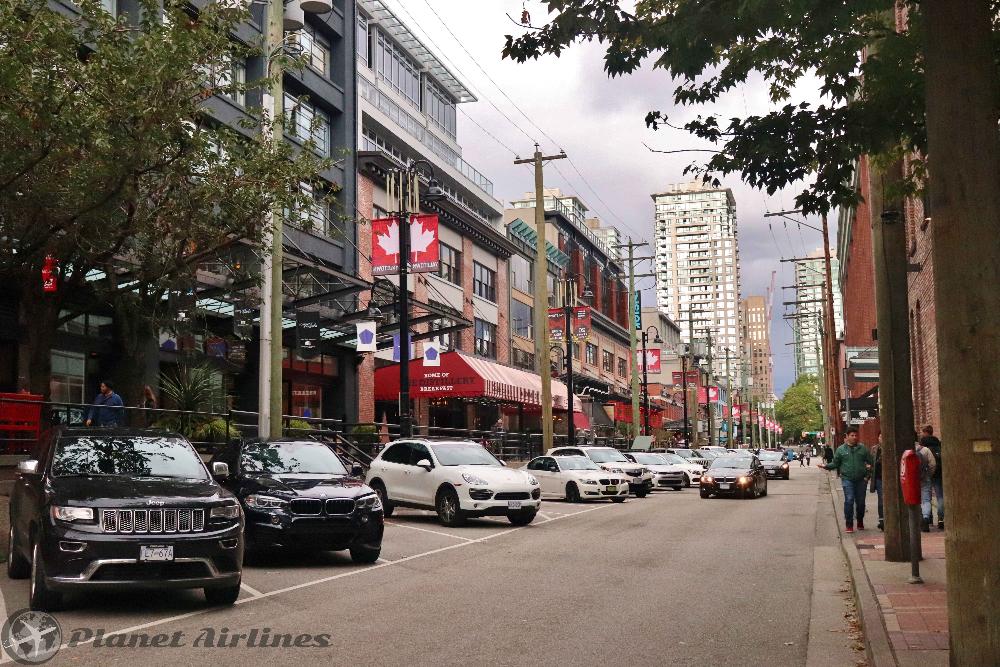

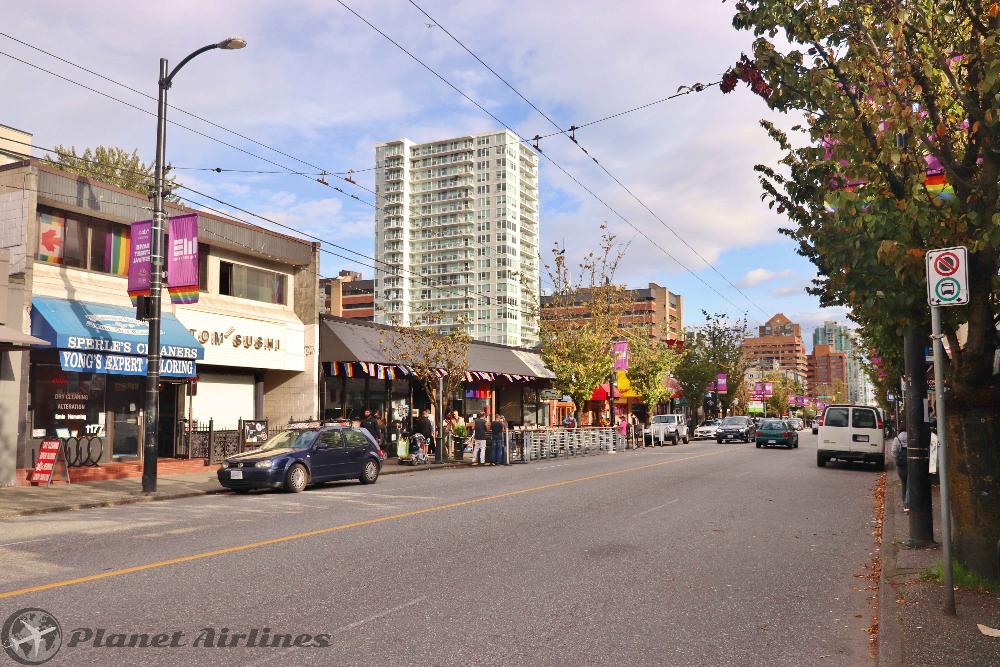
Shopping in Vancouver is varied and offers a wide range of products and quality, with everything from designer shops to laid-back local shops and markets, as well as jewellery and home accessories available in malls and shopping areas throughout the city.
Commercial Drive is known as 'Little Italy' and has very trendy, quirky boutiques, while Davie Village in the West End is home to great bookshops. Chinatown, encompassing Main Street and Keefer, trades in ginseng, green tea, silks, weekend summer markets, and exotic fresh produce.
Another Main Street also offers a wide selection of antique and home accessory shops. Granville Island Market sells fresh produce, meats, fish, and baked goods, and there are a diverse range of shops, stalls, and galleries in the area.
Downtown Vancouver and Gastown near to Waterfront Station, have shops offering high fashion, jewellery, shoes, and homewares, while the Sinclair Centre has upmarket fashion and art shops. Royal Centre is made up of a variety of underground stores and the Pacific Centre is home to the famous Holt Renfrew shop.
Staying in Vancouver is well suited for all budgets. The city is large enough to offer cheaper accommodation options when you are prepared to stay away from the city centre, but are in good connection by busses or Skytrain. Private houses, Bed & Breakfast are widely available as well as Airbnb rooms or flats.
For hotels, you can find cheaper hotels at the Eastside of the city and in Chinatown. Prices for hotels range from €40-100 per night, depending on zone and area.
❗Attention: Staying in Vancouver is safe, however there are areas, particularly in the eastern side of the downtown at East Hastings street where there are more beggars and homeless shelters. There are many cheaper hotels in the area but pay attention to belongings and pickpockets.


Vancouver is an easy city to travel around and see most places of interest in a few days. If walking around and keeping active is not for for you, there are also many tours and activities which are available to arrange within a group and pay per activity from the many tour agencies in the area. The city centre can be seen in 2 full days, however there is a lot of scenery and beauty to see around so travelling to the outskirts is a must.Ideally 3 to 4 nights would be enough for Vancouver.
Vancouver Photo Slide 📷











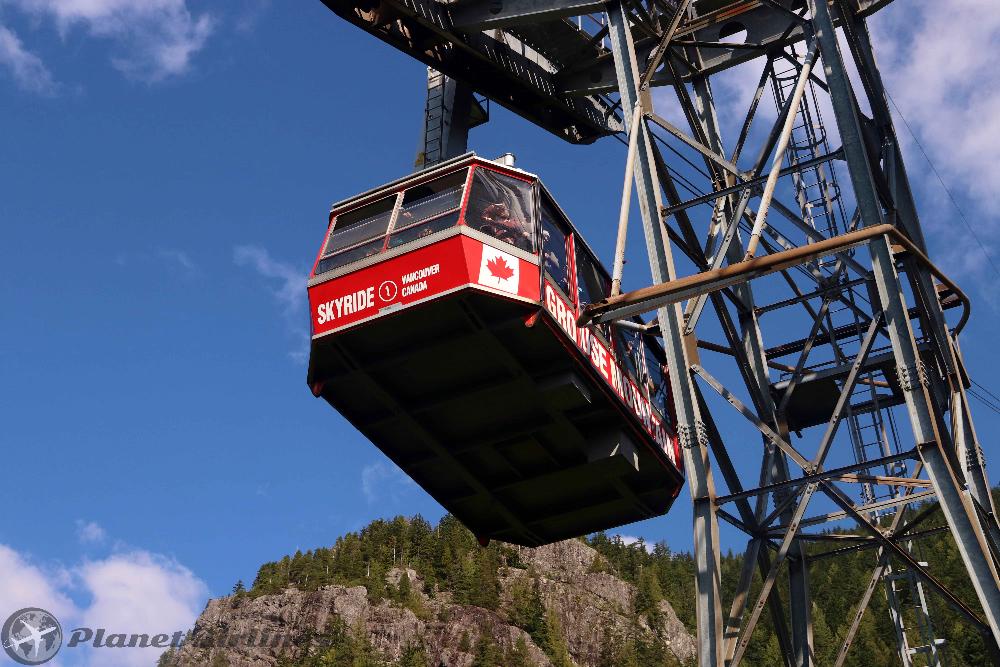


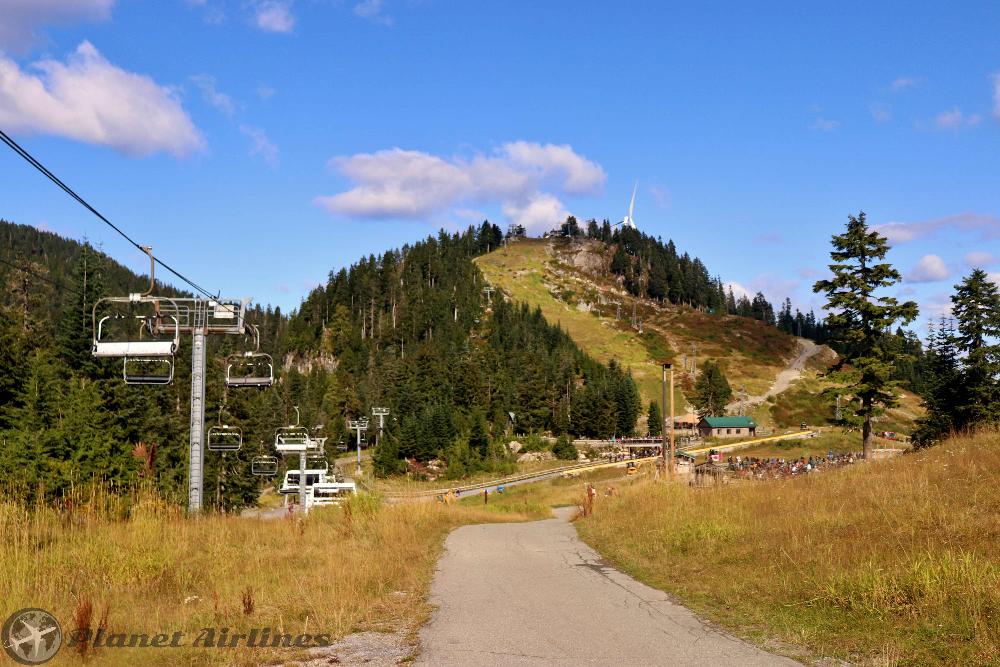
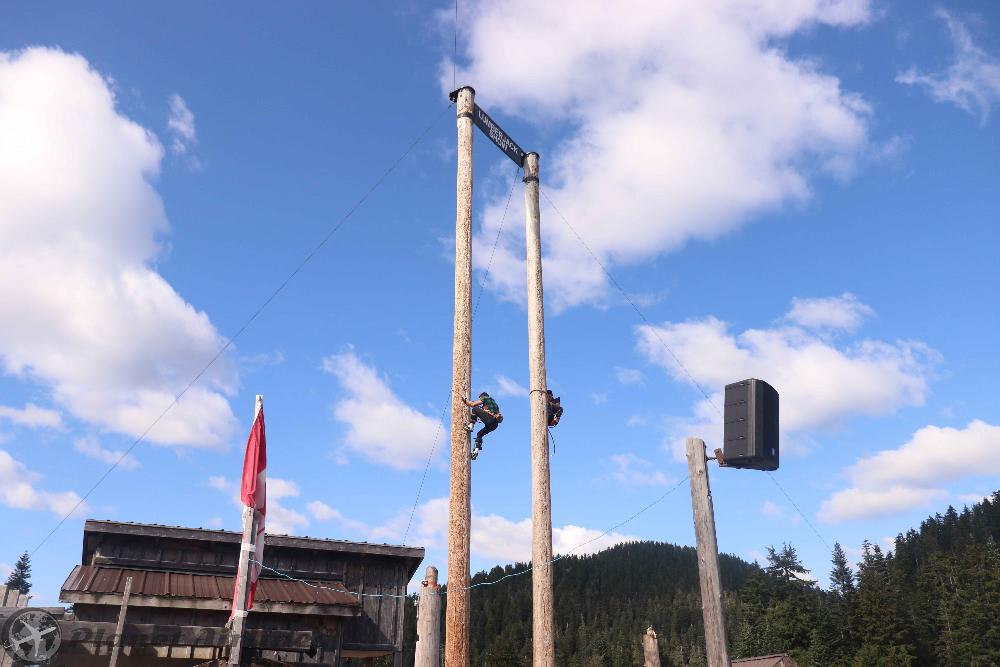
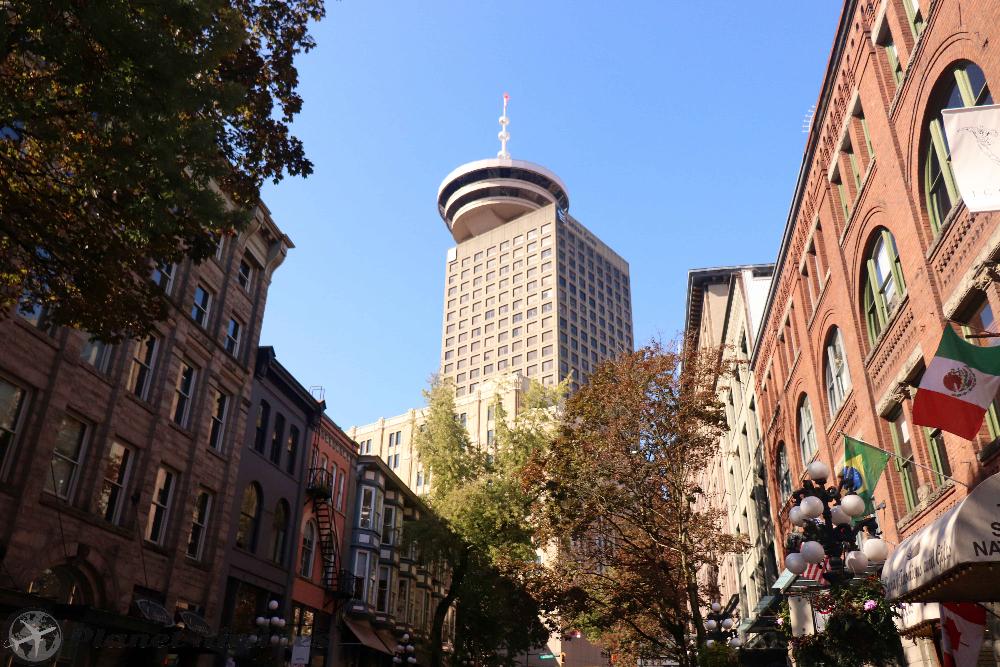

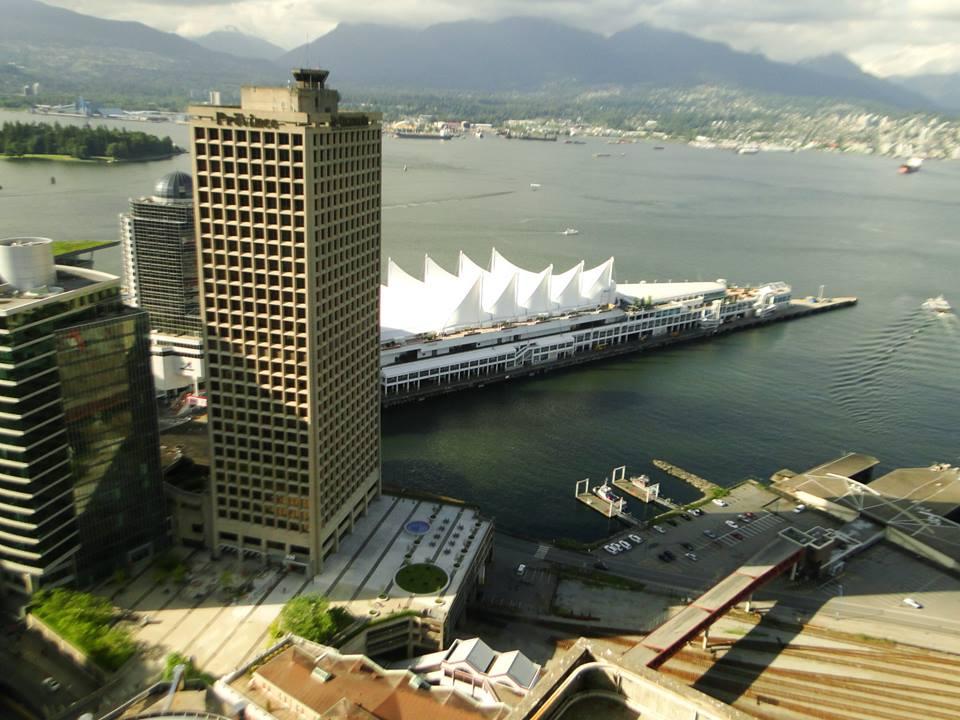
.JPG_m.jpg)
.JPG_m.jpg)
.JPG_m.jpg)
.JPG_m.jpg)





























.png)